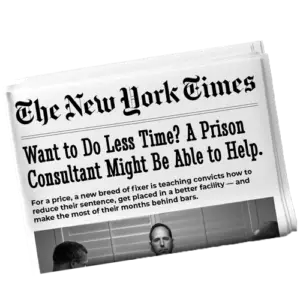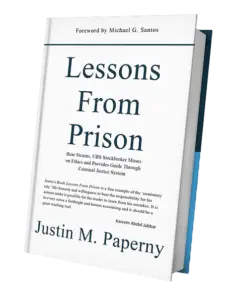This webinar reflects the insight we’ve shared in dozens of posts, webinars, and training calls—including five recent blogs on the subject. All of it points to one conclusion: policy changes mean nothing unless your file proves you’re ready.
Before the week ends, start working on seven components of a critical release plan. Fill out page one. Email it to your family. Prove that you’re doing more than listening—you’re building. Without documentation, there is no influence.
On May 28, 2025, the Bureau of Prisons issued a directive that could help people transition to home confinement earlier. But it won’t happen for everyone. It will only happen for the people who prepare. The memo lays out four expectations:
Prioritize home confinement for those who are eligible and do not need a halfway house.
Use Conditional Placement Dates, calculated using time credits from the First Step Act (FSA) and Second Chance Act (SCA).
Apply statutory authority appropriately:
18 U.S.C. § 3624(g) – FSA earned time credits
18 U.S.C. § 3621(e) – RDAP early release
18 U.S.C. § 3624(c) – SCA pre-release custody
18 U.S.C. § 3624(b) – 15% good time credit → There is no restriction on how many earned time credits can be applied toward home confinement.
Make recommendations based on a person’s needs, support system, and demonstrated preparation.
Understanding the Math: 60-Month Federal Prison Sentence Example
Let’s use a concrete example. Say someone is sentenced to 60 months:
15% good time = 9 months off → 51 months
RDAP = 12 months off → 39 months
First Step Act = 12 months off → 27 months
Second Chance Act = up to 12 months in home confinement → only 15 months served in prison
This means if someone qualifies for every possible program and builds the proper release plan, they may transition to home confinement after serving just 15 months in prison. That’s not automatic. That’s the result of filing early, documenting effectively, and removing friction for decision-makers.
Add This to Your File: What Stakeholders Need to See
1: A typed release plan
2: Housing verification
3: Employment confirmation or Volunteer Offer
4: Evidence of program participation (with dates)
5: A calendar showing weekly activity
6: Proof that others have benefited from your effort
7: A narrative that ties it all together
8: Links to published work on PrisonProfessorsTalent.com
The First Step Act Was Built to Reward Merit
When the First Step Act was signed into law in 2018, it introduced a simple idea: people who work toward rehabilitation should receive credit for it. But the rollout was chaotic. The BOP delayed the creation of the risk assessment tool. There were years of miscommunication about how credits would be calculated. Many qualified people were never credited.
COVID changed that. During the pandemic, the BOP moved over 15,000 people to home confinement. Less than 25 returned to custody for criminal violations. A recidivism rate of 0.0017%. That’s not speculation. That’s evidence.
Michael Santos predicted this in his law review article:
“Recidivism rates show that the longer we expose people to ‘corrections,’ the less likely those people become to emerge as law-abiding, contributing citizens.” (66 Hastings L.J. 1549)
He didn’t just write about it. He lived it. He built Earning Freedom inside the walls, one plan at a time, when no earned credit system even existed.
Your File Must Be Built for Multiple Eyes
This isn’t just about your case manager. Others who may review your file:
Unit team members
Halfway house staff
Probation officers
Future judges (via motion or clemency)
The File Is the Difference
Some people will see this BOP memo and assume it guarantees early release. It doesn’t. The memo gives staff the discretion to act—if the individual’s file removes risk and provides structure.
As Michael said in a recent call:
“Nobody cares how you feel. They care what’s in your file.”
This is about influence. You are persuading your case manager. You are persuading a regional director. You may be persuading a judge six months from now.
That’s what we covered in our Pre-Suasion webinar: persuasion is not about asking. It’s about what you’ve built. When staff open your central file, what do they see? Who are you currently persuading?
Tracii Hutsona prepared a complete release plan before she surrendered. She gave it to her case manager. She started teaching others. She documented everything. That’s why her file moved. That’s why her sentence was reduced.
Glenn Hudson led release planning workshops. He helped others. He submitted his business plan, and the BOP honored his credits. Not because he waited—but because he submitted.
Required vs. Extraordinary In Federal Prison
Everyone is supposed to complete programs. That’s required. But helping others build their release plans? Teaching classes? Publishing progress on Prison Professors Talent? That’s extraordinary.
Extraordinary people move earlier—not because the BOP picks favorites, but because they create certainty.
“What Grade Are You Earning?”
Michael uses this framework:
Serve all 72 months? You earned an F.
Serve 60? D.
Serve 45? C.
Serve 36? B.
Serve 30? That’s an A.
Everyone passes eventually. But how are you changing your grade?
Persuasion Is Your Responsibility:
Jon Gustin said:
“You have to make it in the case manager’s self-interest to help you.”
Chris Maloney said:
“The documentation must come from the individual.”
Purple Cow: Make Your File Impossible to Ignore In Federal Prison
Seth Godin described it best: people don’t slow down for a brown cow. But a purple cow? They stop. They notice.
Most files are brown cows: generic, incomplete, late.
Tracii and Glenn built purple cows. Not because they asked. Because they built something that demanded a second look.
We Must Try. Our Family Is Watching.
This is the message we ended our recent newsletter with. It applies here:
“Nothing I do matters.”
That belief keeps people in prison longer.
You may not get a guarantee. But you still submit. You still try. You still write the file someone might read six months from now.
You try because your family is watching. Your probation officer may be watching. A judge might review your motion one day. What will they see?
Tabula Rasa: The Slate Is Still Blank
In our philosophy series, we discussed Tabula Rasa—the blank slate. Every submission, every plan, every verified step adds to your slate.
You are not finished. You are still being written.
If your record is empty, that’s your responsibility. If your record is persuasive, that’s your work.
What We Continue to Build
This memo did not arrive by accident. It came from pressure—applied consistently by people like Michael Santos, and through work like ours at Prison Professors.
We continue to:
Push for the closure of federal prison camps
Promote structured home confinement for those who earn it
Support universal recognition of “extraordinary and compelling” progress
Provide free guidance on PrisonProfessors.org
Everything Michael has stressed for decades is slowly becoming reality.
Why Most People Won’t Benefit—and What Moves The Needle
Skepticism is part of this process. We hear it every week:
“This won’t work for me.” “It doesn’t matter what I do.” “I’ve already tried and they ignored me.”
Those comments don’t come from laziness. They come from discouragement. But here’s the problem: they also become the reason someone stops submitting. Stops updating. Stops preparing.
In one of our training calls, Michael Santos said:
“When I started writing the blog that became Earning Freedom, there was no policy. There was no credit. But we kept writing. Because we believed someone would care one day. Someone would read it. That’s what the First Step Act now rewards.”
That message runs through all five blogs we’ve published on this memo:
In the first, we emphasized that the file—not the policy—makes the difference.
In the second, we showed how Tracii Hutsona didn’t wait. She created the plan and led others.
In our third blog, we showed why eligibility under the First Step Act isn’t enough—without a documented release plan, people who earned credits still stayed in prison.
In the fourth, we focused on stakeholder influence: persuasion over emotion.
In the fifth, we pushed for broader reform and asked what still needs to be built.
Each of these pieces speaks to one goal: build a record that makes it easy for someone to approve your transfer. Build early. Build completely. And keep building even when no one reacts.
As Michael said:
“I wrote for years to an invisible audience. Then one day, they started responding. But by then, I already had the record ready.”
The directive gives staff permission. Your file must give them confidence. Confidence doesn’t come from waiting. It comes from building over a sustained period of time.
The BOP is not in the business of guessing. They are in the business of documentation. You cannot submit a blank slate. You cannot submit a half-finished plan. You must fill it.
Why Most People Miss the Opportunity—and What You Must Do Differently
We’ve spoken with thousands of people in custody and their families. And we’ve seen the same outcome over and over again: people who do the minimum stay longer. People who document consistently move earlier.
Here’s the reality the memo doesn’t say out loud: most people won’t get transferred early—not because they don’t qualify, but because they didn’t submit what they needed to when it mattered.
Michael Santos has said it in every training session:
“The people who succeed are the ones who stop waiting for permission and start submitting proof.”
This is not just about a few forms. It’s about credibility. It’s about a release plan that includes:
A calendar showing what you’ve done week by week
Evidence that others have benefited from your preparation
Examples of how your plan aligns with the goals of the First Step Act
A response to the question, “What has this person done that proves they don’t belong here anymore?”
It’s also about understanding the file from the stakeholder’s perspective. As Jon Gustin said:
“When a case manager sees that you’ve reduced their work, not increased it, they’ll want to move you.”
Every person says they want to go home. But only a small percentage will take the time to build the file that makes that possible. That’s not theory. That’s what we’ve seen again and again.
Just look at what Michael did during his 26 years. He wrote, documented, published, and taught—not because the policy existed then, but because he believed one day it would. The First Step Act validated that belief.
We’ve published dozens of examples like Tracii and Glenn because they show what extraordinary effort looks like. They led, taught, documented, and followed through. And they got results because they earned credibility.
That’s what we’re trying to build with the nonprofit. A system where effort counts. Where merit matters. Where the system rewards the people who prepare.
Sentence Timeline Strategy: What To Do Based on Time Remaining
If you have over 18 months left: Begin leading others, Submit your plan early, Document in real time
If you have under 18 months: Update your release plan monthly, Use your Prison Professors Talent profile to show updates, Submit your materials to your case manager and probation officer
[Use the Nonprofit. Build Leverage.]
Publishing your progress isn’t extra—it’s leverage. PrisonProfessorsTalent.com exists to help you:
Validate your preparation
Influence stakeholders
Submit evidence from a public, nonprofit platform
What to Do Next?
Study our 7 point release plan checklist.
Begin your weekly documentation now.
Submit one new item to your case manager before the end of the month
Email your release plan to someone who supports you
And you must ask yourself:
Who am I waiting on to move my file?
What has my effort looked like this month?
If a decision had to be made tomorrow, would my case manager have everything they need?
The BOP memo opened a door. Now it’s your job to walk through it.
When Is the Right Time to Start?
We’ve seen people try to cram everything into the final three months of their sentence. That rarely works. By then, staff have already built their case notes. Home confinement placement decisions are already in motion. The time to prepare is not at the end—it’s now.
We ask people: would you wait until the final week of college to turn in your final project? Would you expect your professor to take you seriously if you started then?
The same holds true here. Case managers, unit teams, and halfway house liaisons are looking at consistency, not last-minute effort.
The First Step Act rewards effort. But it must be sustained and verifiable. A single class taken in month 18 won’t override a blank file from months 1 through 17.
Start now. Build weekly. Show progress that stacks. If your timeline is short, act daily. If your sentence is long, use the time to build something extraordinary—just like Glenn and Tracii did.
And if you think you’ve waited too long, remember: something is better than nothing. But don’t wait another day.
Final Questions:
What does your file say about you?
What have you documented?
Who have you helped?
Have you created certainty—or just waited for change?
All strategies are available for free at PrisonProfessors.org.
Justin Paperny



